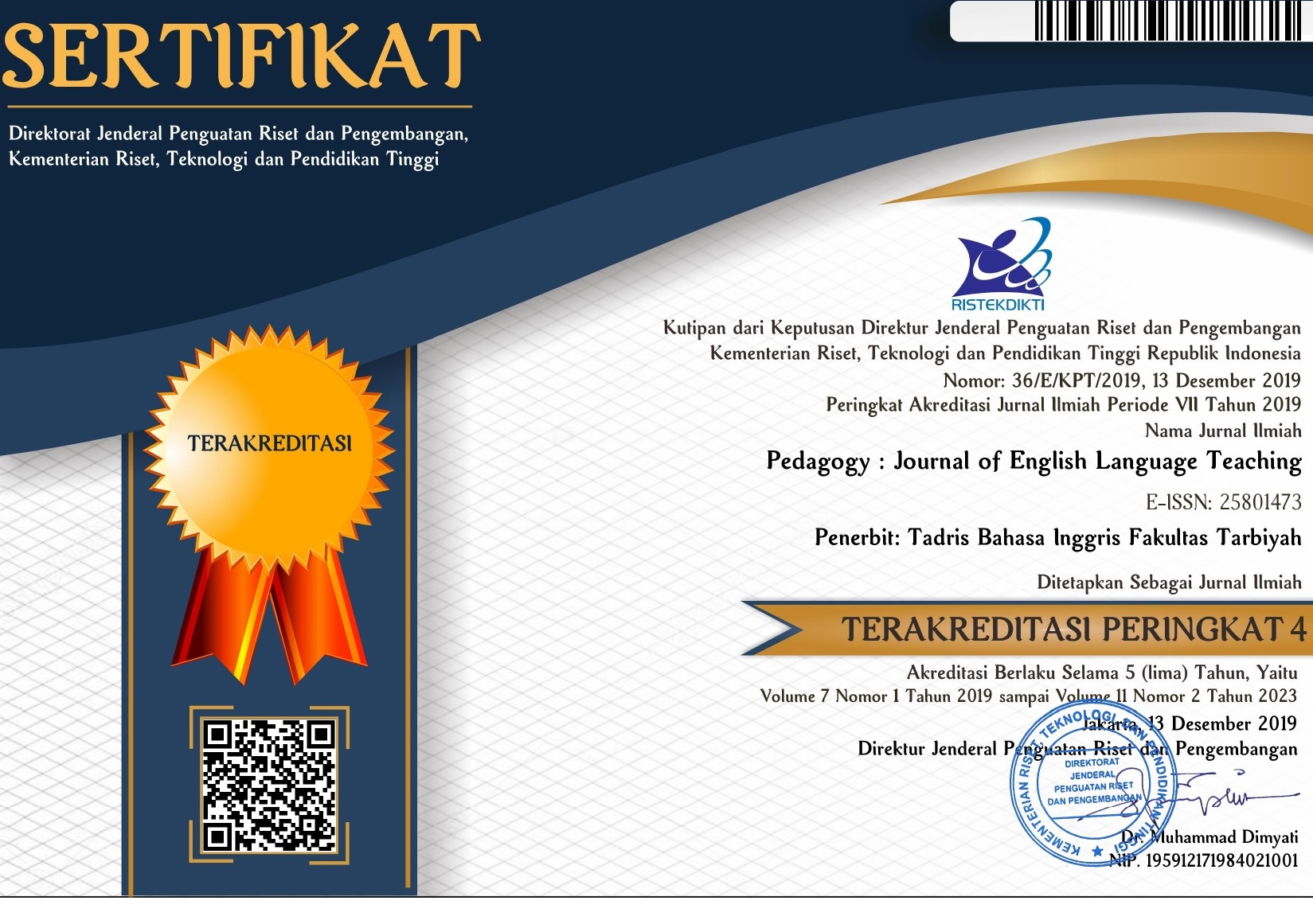A Study on the Effect of Multilingual Repertoire on Speaking in Three Universities in Metro City, Lampung – Indonesia
DOI:
https://doi.org/10.32332/pedagogy.v6i2.1232Keywords:
Local Languages, Multilingualism, Multilingual Repertoire, SpeakingAbstract
In the whole part of the world, some people could speak more than two languages. This phenomenon is called by Multilingual Repertoire.Multilingual Repertoire in the students of PBI in IAIN Metro, Muhammadiyah University, and IAIM NU Metro greatly effects to the students’ speaking, especially in pronunciation, style, grammar, and vocabularies. Therefore, this research attempt to know the effect of students’ multilingual repertoire in speaking English. The learners’ subject in this research are 15 students in English language program from three universities in Metro. The data will be achieved through Focus Group Discussion (FGD), interview, and observation. The examination of the collected data reveals that 40% of the students are able to speak English, but they speak in Javanese dialect and style, 20% of the students speak in Sundanese style, 13% of the students speak in Lampungnese style,13% of the students speak in Padangnese style, 7% of the students speak in Melayu style, and the rest is 7% of the students speak in Balinese style. Meanwhile, some of the students need a repetition in speaking skill to make it clear and with makes some grammatical errors. In this regard, the students should be careful in grammatical of each language when they are speaking.















